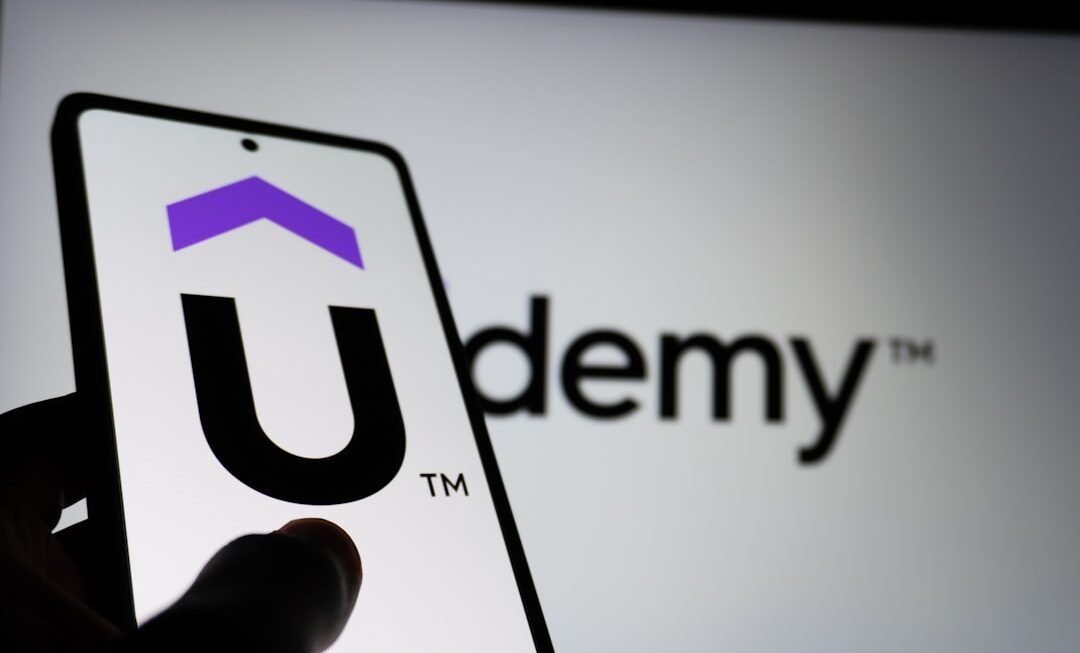The advent of artificial intelligence (AI) has ushered in a transformative era in education, particularly within the realm of online teaching. AI-powered classrooms leverage advanced algorithms and machine learning techniques to create dynamic learning environments that adapt to the needs of both educators and students. This integration of technology not only enhances the educational experience but also addresses the diverse challenges faced in traditional teaching methods.
As educational institutions increasingly adopt AI tools, the landscape of learning is evolving, promising a more personalized and efficient approach to education. In AI-powered classrooms, the role of technology extends beyond mere automation; it serves as a facilitator of engagement and interactivity. By harnessing data analytics, AI can provide insights into student performance, learning styles, and engagement levels, enabling educators to tailor their teaching strategies accordingly.
This shift towards a more data-driven approach allows for a deeper understanding of individual student needs, fostering an environment where personalized learning can thrive. As we delve into the various facets of AI in education, it becomes evident that these innovations are not just enhancements but essential components of modern teaching methodologies.
Key Takeaways
- AI-powered classrooms use artificial intelligence technology to enhance the teaching and learning experience.
- AI can assist online teachers in tasks such as grading, lesson planning, and providing personalized feedback to students.
- Teachers can benefit from AI-powered classrooms by saving time on administrative tasks and gaining insights into student learning patterns.
- Students can benefit from AI-powered classrooms through personalized learning experiences and access to additional support and resources.
- AI-powered classrooms personalize learning by analyzing student data and adapting instruction to meet individual needs.
The Role of AI in Online Teaching
AI plays a multifaceted role in online teaching, acting as both a support system for educators and a personalized learning assistant for students. One of the most significant contributions of AI is its ability to analyze vast amounts of data quickly and efficiently. This capability allows educators to gain insights into student performance trends, identifying areas where students may struggle or excel.
For instance, AI algorithms can track engagement metrics such as time spent on assignments, participation in discussions, and quiz scores, providing teachers with a comprehensive overview of each student’s progress. Moreover, AI can facilitate the creation of adaptive learning pathways tailored to individual student needs. By utilizing machine learning models, educational platforms can recommend resources, activities, and assessments that align with a student’s unique learning profile.
This adaptability is particularly beneficial in online settings where students may have varying levels of access to resources and support. For example, an AI system might suggest additional practice exercises for a student who is struggling with a particular concept while offering advanced materials to those who demonstrate mastery. This targeted approach not only enhances learning outcomes but also fosters a sense of agency among students as they take ownership of their educational journeys.
Benefits of AI-Powered Classrooms for Teachers

The integration of AI into classrooms offers numerous advantages for teachers, significantly enhancing their ability to deliver effective instruction. One primary benefit is the reduction of administrative burdens that often consume valuable teaching time. AI tools can automate routine tasks such as grading assignments, tracking attendance, and managing communications with students and parents.
By streamlining these processes, educators can devote more time to engaging with students and refining their instructional strategies. Additionally, AI provides teachers with powerful analytics that inform their pedagogical decisions. With access to real-time data on student performance and engagement, educators can identify trends and adjust their teaching methods accordingly.
For instance, if data reveals that a significant number of students are struggling with a specific topic, teachers can pivot their lesson plans to address these gaps more effectively. This data-driven approach not only enhances instructional quality but also empowers teachers to become more responsive to the needs of their students.
Benefits of AI-Powered Classrooms for Students
Students stand to gain immensely from the implementation of AI-powered classrooms, as these environments are designed to cater to their individual learning preferences and paces. One of the most notable benefits is the personalization of learning experiences. AI systems can analyze a student’s strengths and weaknesses, allowing for customized content delivery that aligns with their unique needs.
For example, a student who excels in mathematics but struggles with reading comprehension may receive more advanced math problems while being provided with targeted reading exercises designed to improve their skills. Furthermore, AI-powered classrooms foster greater engagement through interactive learning experiences. Many AI tools incorporate gamification elements that make learning more enjoyable and motivating for students.
By transforming traditional lessons into interactive challenges or simulations, students are more likely to remain engaged and invested in their education. This increased engagement can lead to improved retention rates and a deeper understanding of the material being taught.
How AI-Powered Classrooms Personalize Learning
Personalization is at the heart of what makes AI-powered classrooms so effective in meeting diverse student needs. Through sophisticated algorithms, AI systems can assess individual learning styles and preferences, tailoring educational content accordingly. For instance, some students may benefit from visual aids such as videos or infographics, while others may prefer text-based resources or hands-on activities.
By analyzing data on how students interact with different types of content, AI can recommend the most effective materials for each learner. Moreover, adaptive learning technologies powered by AI can adjust the difficulty level of tasks in real-time based on student performance. If a student consistently answers questions correctly, the system may present more challenging problems to stimulate further growth.
Conversely, if a student struggles with certain concepts, the AI can provide additional support through remedial exercises or alternative explanations until mastery is achieved. This level of personalization not only enhances academic performance but also fosters a growth mindset among students as they experience tailored support throughout their learning journey.
Overcoming Challenges in Implementing AI-Powered Classrooms

Despite the numerous advantages associated with AI-powered classrooms, several challenges must be addressed to ensure successful implementation. One significant hurdle is the digital divide that exists among students. Access to technology and reliable internet connectivity remains uneven across different demographics and regions.
In order for AI-powered classrooms to be effective, educational institutions must prioritize equitable access to technology so that all students can benefit from these innovations. Another challenge lies in the integration of AI tools into existing curricula and teaching practices. Educators may require training and support to effectively utilize these technologies in their classrooms.
Resistance to change is common in any field, and some teachers may be hesitant to adopt new methods or tools without adequate professional development opportunities. To overcome this barrier, schools must invest in comprehensive training programs that equip educators with the skills necessary to leverage AI effectively while also addressing any concerns they may have about its implementation.
Examples of Successful AI-Powered Classrooms
Several educational institutions around the world have successfully integrated AI into their classrooms, showcasing the potential benefits of this technology. One notable example is Carnegie Learning’s MATHia software, which utilizes AI algorithms to provide personalized math instruction for students in grades 6-12. The platform adapts in real-time based on student responses, offering hints and feedback tailored to individual learning needs.
Schools using MATHia have reported significant improvements in student performance and engagement levels. Another example is the use of IBM’s Watson Education platform in various schools across the United States. Watson’s cognitive computing capabilities allow it to analyze vast amounts of educational data and provide insights that help teachers tailor their instruction effectively.
By leveraging this technology, educators can create customized lesson plans that address specific student needs while also tracking progress over time. These successful implementations highlight how AI can enhance teaching and learning experiences when integrated thoughtfully into educational settings.
The Future of AI-Powered Classrooms
As technology continues to evolve at an unprecedented pace, the future of AI-powered classrooms holds immense promise for reshaping education as we know it. One potential development is the increased use of virtual reality (VR) and augmented reality (AR) technologies alongside AI systems. These immersive experiences could provide students with hands-on learning opportunities that were previously unimaginable, allowing them to explore complex concepts in engaging ways.
Additionally, advancements in natural language processing (NLP) could lead to more sophisticated AI tutors capable of providing real-time feedback on writing assignments or facilitating discussions with students in a conversational manner. Such developments would further enhance personalized learning experiences by allowing students to interact with AI systems as they would with human instructors. As these technologies continue to mature, we can expect even greater integration of AI into educational practices, ultimately leading to more effective teaching and improved student outcomes.
Ethical Considerations in AI-Powered Classrooms
The implementation of AI in education raises important ethical considerations that must be addressed to ensure responsible use of technology. One major concern is data privacy; as AI systems collect vast amounts of information about students’ behaviors and performance metrics, safeguarding this data becomes paramount. Educational institutions must establish robust policies and practices that protect student information from unauthorized access or misuse while ensuring compliance with relevant regulations such as FERPA (Family Educational Rights and Privacy Act).
Another ethical consideration involves algorithmic bias; if not carefully monitored, AI systems may inadvertently perpetuate existing inequalities within education by favoring certain demographics over others based on biased training data. To mitigate this risk, developers must prioritize fairness and inclusivity when designing algorithms used in educational contexts while continuously evaluating their impact on diverse student populations.
Training and Professional Development for Teachers in AI-Powered Classrooms
To fully realize the potential benefits of AI-powered classrooms, comprehensive training and professional development programs for teachers are essential. Educators must be equipped not only with technical skills related to using AI tools but also with pedagogical strategies that integrate these technologies effectively into their teaching practices. Professional development initiatives should focus on fostering a growth mindset among educators as they navigate new technologies while encouraging collaboration among peers who are also exploring innovative approaches.
Moreover, ongoing support is crucial as teachers adapt to changing educational landscapes influenced by technology advancements. Schools should establish mentorship programs or communities of practice where educators can share experiences, challenges, and successes related to implementing AI in their classrooms. By fostering a culture of continuous learning among educators, institutions can ensure that they are well-prepared to harness the power of AI effectively while enhancing student outcomes.
The Impact of AI-Powered Classrooms on Online Teaching
The integration of artificial intelligence into online teaching represents a significant shift in how education is delivered and experienced by both teachers and students alike. As we have explored throughout this article, AI-powered classrooms offer numerous benefits ranging from personalized learning experiences for students to enhanced instructional capabilities for educators. While challenges remain regarding equitable access and ethical considerations surrounding data privacy and algorithmic bias, the potential for positive impact is undeniable.
As we look toward the future, it is clear that continued investment in training and professional development for educators will be essential in maximizing the benefits of these technologies while addressing any concerns that arise along the way. Ultimately, as educational institutions embrace the possibilities presented by AI-powered classrooms, they pave the way for a more inclusive and effective approach to teaching that meets the diverse needs of learners in an increasingly complex world.












